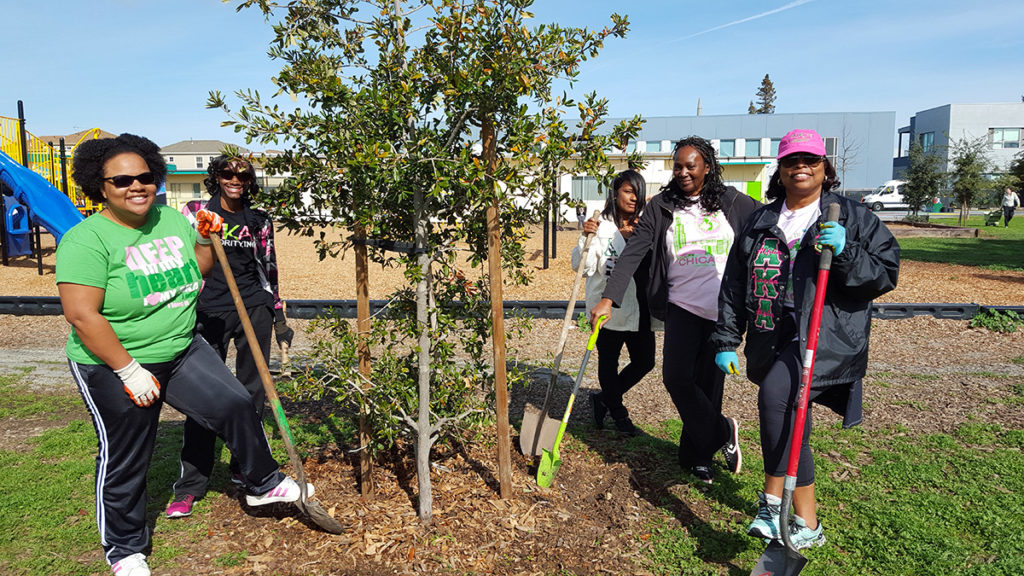- About Us
- Our Work
- Tree Info
- Get Involved
- Blog
- Support Us

The first five years are critical for the long-term health of a tree. Proper watering, pruning, and other tree care will ensure a healthy, mature tree and drastically reduce future maintenance costs.
Note: While Canopy recommends proper young tree pruning, please do not prune Palo Alto street trees, as the City ordinance does not permit residents to prune street trees.
Conserve water and preserve trees by following these guidelines.
Watering instructions to grow a healthy tree
Learn specific needs about your tree species at Canopy’s Tree Library.
After planting through Year 1:
Year 2:
Years 3-5:
Five steps to young tree pruning
Watch Larry Costello and Ellyn Shea’s video for homeowners:
Take a look at Trees A and B below.
Tree A:

Compare the two trees:
Cost: Which tree is more likely to become costly to maintain? A or B?
Safety: Which tree is more likely to become a safety hazard? A or B?
Longevity: Which tree is more likely to live a shorter life? A or B?
The correct answer is Tree B: it will be more costly to maintain, more of a safety hazard, and will likely have a shorter life.
What’s the difference between happy Tree A and unhappy Tree B? Tree A was pruned at a young age to have a central leader (central trunk), while Tree B was not.
A tree without a central leader is less structurally sound, and more likely to need costly and unsightly pruning as it matures. Trees lacking a strong structure are also vulnerable to serious limb breakages during a storm.